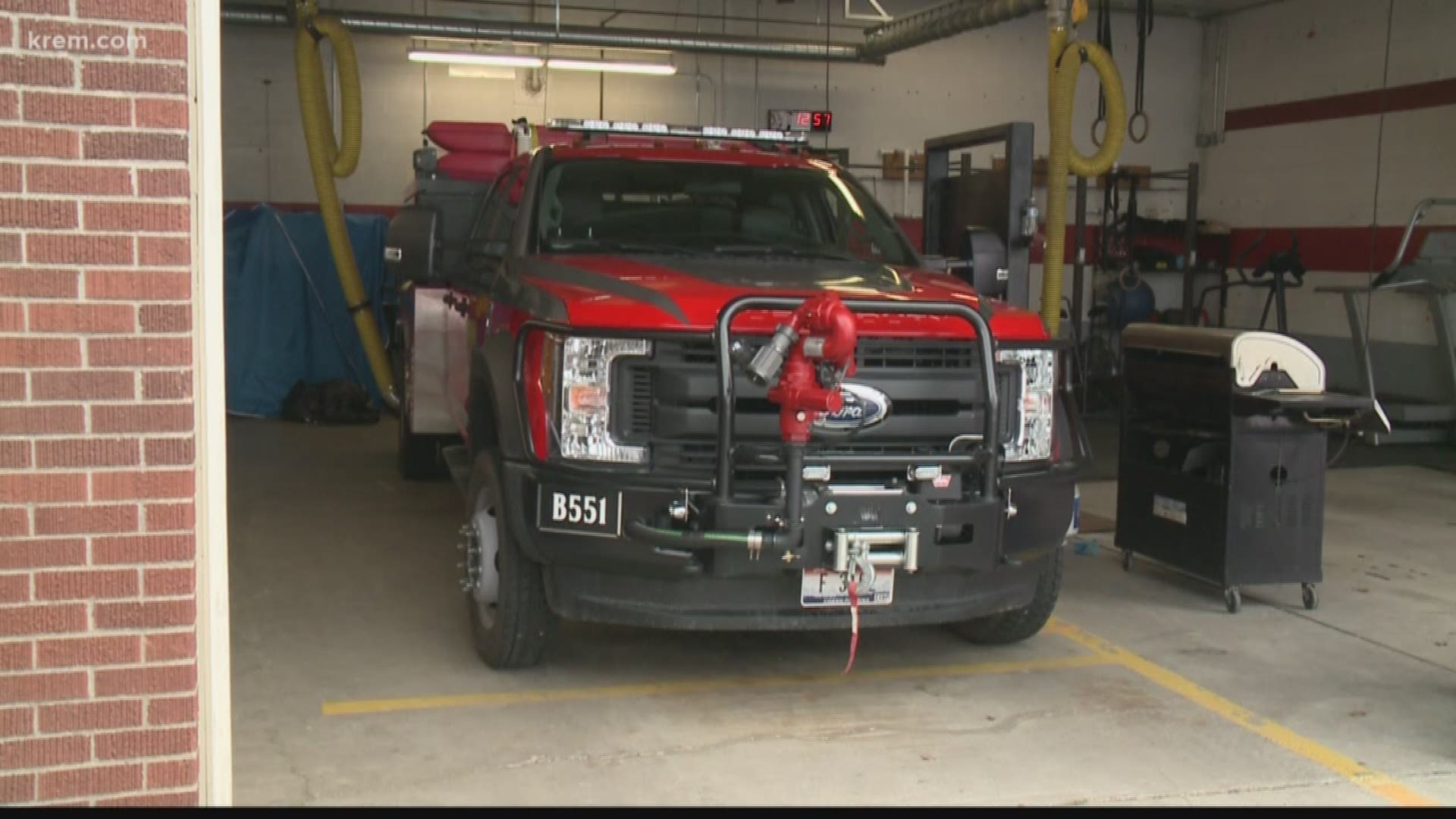COEUR D'ALENE, Idaho — An early season wildland fire in North Idaho has area fire agencies reminding residents that the threat of fire remains present, despite February's heavy snow.
Two small fires broke out in Boundary County on Tuesday but were both quickly contained. Notably, a small wildland fire burned a quarter acre of land off of Farm to Market Road North of Bonners Ferry in the Copeland area, according to local fire crews. The blaze was quickly contained, but managed to spread into some timber according to North Bench Fire District Chief Gus Jackson, who had firefighters respond to the area.
"It was a true fire," Jackson said, noting that it was "surprising" to see the fire burn in timber this early in the season.
Also on Tuesday, crews responded to a small brush fire near Deep Creek Loop road that was the result of a controlled burn that got out of control, according to South Boundary Fire District Chief Tony Rohrwasser. The fire burned half an acre.
Both fires, which started within an hour of each other, were likely driven by high winds at the time.
Strong winds can be a prime factor in drying out quick-to-burn grasses, fire experts say.
“We call them a ‘one hour fuel,'” said Chris Larson, Deputy Fire Marshall with the Northern Lakes Fire District in Hayden.
Larson said that this early on in spring, certain grasses dry out quickly because they're already dead or haven't begun growing.
“The winds and the heat that we had, when we had the 60 degree days, actually dried out those fuels that haven’t started growing yet,” he said.
Despite heavy snow that blanketed much of the Inland Northwest in February, Larson said that some trees in the area were already dried out from a dry fall and an initially dry winter.
“All that dead growth is still there. And it becomes a potential for a wildland fire to spread into the woods,” he said, noting that some trees spent more months in a dry environment that the month of snow in February.
Larson also noted that some branches and fuels under a tree's canopy can be protected from snow and thus remain dry through the winter.
“Once they’re dried out, they’ll run really fast,” he said of the fuels.
While some homeowners may want to start burning slash piles, Larson noted that anyone thinking of starting a burn should be extremely aware of the weather and forecast.
“We have to be constantly on alert. We have to be vigilant on our preparation all year round,” he said.

